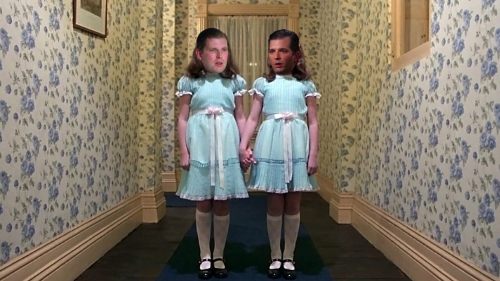THE GIRL IN THE SPIDER’S WEB Review: This Is Not The Lisbeth Salander We Knew
When the screen versions of Stieg Larsson’s The Girl With the Dragon Tattoo were produced in Sweden in 2009 and the U.S. in 2011, they were exemplars of a movement that hadn’t yet been named. In Lisbeth Salander, a computer hacker who has survived a youth rife with sexual abuse to become an avenger against misogynistic men, Larsson created and the movies popularized a heroine who spoke to the increasing frustration with male aggression and subjugation, which exploded a year ago and continues to reverberate through the film business. Which is why it’s so surprising and disheartening that The Girl in the Spider’s Web, the first Hollywood follow-up to Dragon Tattoo, largely abandons Lisbeth’s very particular and compelling trauma-induced psychology and reduces her to just another black-clad ass-kicker.
We do meet the familiar Lisbeth (other than the fact that she’s now played by Claire Foy instead of Rooney Mara) in the opening minutes of The Girl in the Spider’s Web, during which she brutally punishes a wealthy wife-beater and relieves him of his spouse, his little daughter and all of his money. It’s a scene that, no surprise, is given heavy prominence in the marketing campaign, but it has little to do with the rest of the movie, and serves to raise expectations that are disappointed over the next 100 minutes.
The Girl in the Spider’s Web is based on a novel by David Lagercrantz, who was appointed Larsson’s successor as keeper of the franchise (Larsson died in 2004, before his so-called Millennium trilogy had even been published). The storyline embroils Lisbeth in traditional espionage intrigue centering on computer scientist Frans Balder (Stephen Merchant); screenwriters Jay Basu, Fede Alvarez (who also directed) and Stephen Knight have added a handy MacGuffin in the form of Balder’s FireFall program, which can control the world’s nuclear launch codes. Balder created it for the NSA, but has had second thoughts about putting such power in one organization’s hands and asks Lisbeth to cyber-steal it from them. That puts her in the crosshairs of not just the NSA, as represented by agent Ed Needham (Lakeith Stanfield), and the Swedish authorities, but a shadowy Russian outfit called the Spider Society. No sooner has she retrieved Firefall than the Spiders steal her computer and give her a fireball, blowing up Lisbeth’s apartment and almost Lisbeth, who rather improbably survives by jumping into a full bathtub.
If reading the name FireFall put you in mind of Skyfall, that’s not the only way Girl in the Spider’s Web will have you thinking of James Bond. Absent Lisbeth’s previous distinctive psychology, there’s little to distinguish this from your run-of-the-mill 007 imitation. In that sense, it’s probably a good thing the filmmakers removed the book’s gimmick of nicknaming the Spiders after Marvel Comics characters; on the page, their leader was known as “Thanos,” which would have made for even more unflattering comparisons in the film version. This villain, as foreshadowed by an opening flashback to Lisbeth’s childhood, turns out to be her long-lost sister Camilla (Sylvia Hoeks), who has personal reasons beyond the criminal for tormenting her sibling. These finally tie the movie back to the Lisbeth of the past in a meaningful way, but they’re only revealed at the very end. Until then, Camilla is your basic icy-blonde villainatrix striding through the film in a bright scarlet outfit, meant to stand out against the otherwise gloomy monochrome color scheme that has become standard-issue for this genre.
The fact that a woman proves to be Lisbeth’s key nemesis demonstrates just how far afield The Girl in the Spider’s Web has strayed from the original inspiration. That wouldn’t be such an issue if the movie maintained interest and tension on its own terms, but the filmmakers haven’t come up with enough compelling ideas or imaginative developments to make up for the digression. The whole thing feels rote, like a previously unconnected, generic thriller screenplay that was rewritten to be part of the Lisbeth universe. Nowhere does this seem more the case than in the scenes with Lisbeth’s journalist ally Mikael Blomkvist (Sverrir Gudnason, taking over for Daniel Craig). His inclusion feels dutiful rather than necessary, as he’s not very interesting as written or performed and has too little to do, and Gudnason and Foy have no chemistry together.
For her part, Foy slips easily into Lisbeth’s tattooed skin, yet divesting the character of her darker undercurrents leaves the actress with little but standard action-heroine beats to play. She plays them well, and she has her moments, while Alvarez stages a couple of chase and combat setpieces that momentarily spark the film to life. The stylistic visual flourishes he brought to his previous horror films Don’t Breathe and Evil Dead are missing, though, and in the final analysis, he seems a gun for hire here—much like, unfortunately, Lisbeth herself in this story.



